Bigger Picture:
Imagine a magnet approaching the solenoid with some initial constant velocity on \$v_0\$ on x axis. The approaching magnet will induce an EMF and induced current in solenoid. We want to maximize the power loss so that the solenoid acts as a brake. We intend to do so by maximizing the power losses in the solenoid (both winding and core).
Technical Setup:
Most of the time we deal with minimizing copper and core losses in an electromagnet. Let us now consider an electromagnet with a core: the shape, size, material etc. and all the other variables are left free for design.
Given an electromagnet in which the winding is supplied with some variable DC input current and voltage, and their values can be determined by two given functions over time \$t: V(t)\$ and \$I(t)\$. The maximum input voltage and current are 10s of volts and at most 10 A. We can thus simply determine the value of input power:
\$P(t)= V(t).I(t)\$
Technical Objective:
We need to maximize the power losses in the electromagnet (in form of eddy currents etc.) in terms of percentage w.r.t. to total input power to the winding. How do we achieve this?
Question 1: To maximize the core losses what shape, size, material, etc. for the core do we need? Wikipedia (https://en.wikipedia.org/wiki/Magnetic_core) mentions: > If the core is electrically conductive, the changing magnetic field induces circulating loops of current in it, called eddy currents, due to electromagnetic induction. The loops flow perpendicular to the magnetic field axis. The energy of the currents is dissipated as heat in the resistance of the core material. The power loss is proportional to the area of the loops and inversely proportional to the resistivity of the core material.
So should we as a rule of. thumb choose a highly conductive solid core (soft iron with maximum diameter in case of a cylindrical shape)?
How do we deal with this rigorously from an engineering point of view (both design and calculating the power losses)? Can we achieve losses of over 75% (of input power)?
Question 2: What kind of winding parameters do we need ((1). gauge of wire, (2) number of turns (3) shape of solenoid) to maximize the winding losses?
